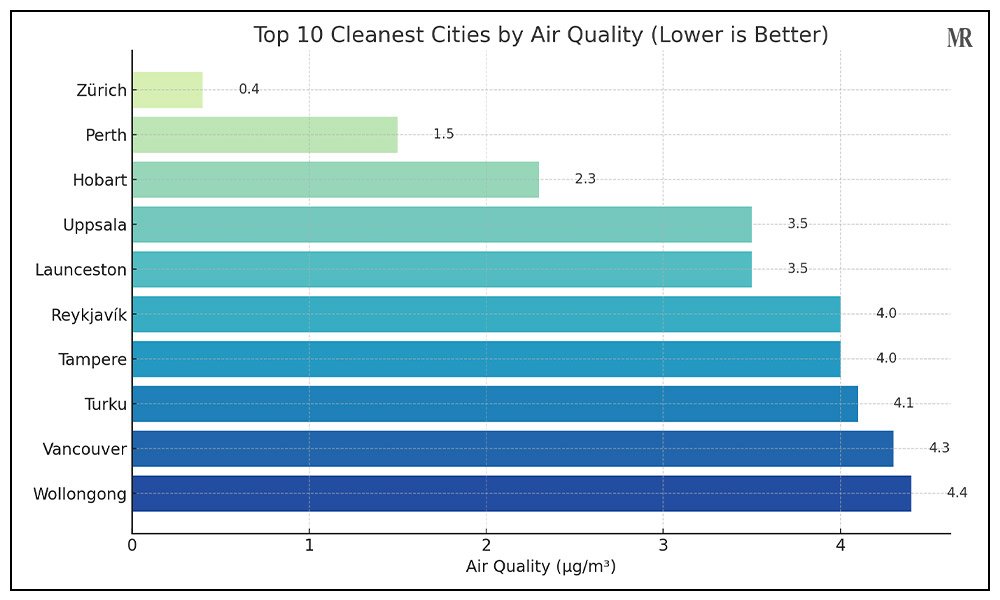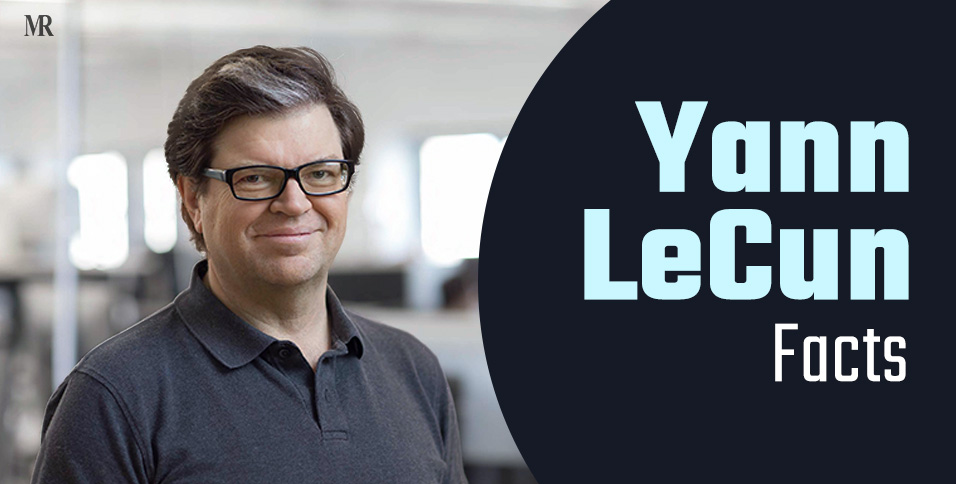Air pollution affects how we live, breathe, and function every single day. While many cities are still battling harmful emissions, a few have quietly set the bar for what clean, breathable air should look like. In 2025, cities like Zürich, Perth, and Uppsala didn’t just perform well in air quality—they outperformed most of the world, consistently recording some of the lowest PM2.5 levels globally. This blog highlights the cleanest cities in the world based on air quality data from PSS Removals’ 2025 Clean Air Report. It breaks down not just where the air is cleanest, but why, through smart urban planning, green mobility, circular waste strategies, and citizen-driven action. And while rankings may shift over time, these cities have proven one thing: cleaner air isn’t a dream—it’s a result of decisions made every day. Here’s how they did it—and what other cities can learn from them.
Understanding Air Quality: What Do the Numbers Mean?
Air quality is commonly measured using PM2.5, which refers to fine particulate matter smaller than 2.5 micrometers. These tiny particles are inhalable and can penetrate deep into the lungs, leading to health issues like asthma, heart disease, and respiratory infections. The unit used is micrograms per cubic meter (µg/m³)—the lower the number, the cleaner the air.
Based on PSS Removals’ 2025 Clean Air Report, the rankings reflect annual average PM2.5 concentrations across global cities. While pollutants like NO₂ and Ozone (O₃) also affect air quality, PM2.5 is the primary benchmark for health risk.
It’s important to note: air quality is dynamic, influenced by seasons, wildfires, traffic, and industry. Though daily fluctuations occur, the cities listed here consistently maintain exceptionally low PM2.5 levels throughout the year, highlighting their success in sustainable urban planning and public health efforts.
Here are the 10 Cleanest Cities in the World

1. Zürich
Zürich uses nearly 20% of its urban land for green spaces. With over 70 public parks and gardens, these areas help keep the air clean and the city cool. One such place is Belvoir Park, where you can enjoy fresh air, lake views, and colorful spring blossoms like Japanese cherry trees and magnolias.
The city is also hosting global events in 2025. The 27th European Forum on Urban Forestry from June 3 to 7 will explore how trees help cities stay healthy. In December, the International Conference on Urban Forestry and Statistics will focus on using data for greener planning. The Sustainability Week Zurich, happening from April 7 to 11, involves universities encouraging meat-free meals and local produce in their cafeterias.
All these efforts prove why Zürich continues to rank among the cleanest cities in the world. Its greenery is not just for beauty—it plays a direct role in climate control, air quality, and public happiness.
Zürich’s green culture also reflects in small things. Public bins for recyclable and compostable waste are everywhere. Even children learn the value of sorting waste correctly in schools. Clearly, when planning and people work together, sustainability becomes second nature.
This approach not only improves urban health but also sets a standard for other cleanest cities in the world to follow.
2. Perth
Perth is working hard to earn its place among the cleanest cities in the world, and it’s doing it with real action on the ground.
The City of Perth has launched the Urban Forest Plan, which is more than just planting trees. From April to October 2025, the city will plant hundreds of new street trees under the Infill Street Tree Planting Program. This program fills empty spots, lowers street temperatures, and improves green pathways across the city.
Meanwhile, the City of South Perth is building a new urban greening strategy. It includes planting urban forests, shrubs, vegetation, and understory plants to create cooler, more livable spaces.
At the same time, the Perth and Peel Urban Greening Strategy—led by the state government—focuses on increasing tree canopy across government-owned land. This project uses consistent digital data to track tree growth and manage urban forests more effectively.
In February 2025, over 100 experts and urban planners gathered at the WALGA Urban Forest Conference to share ideas and boost greening efforts. Later that year, Perth Design Week 2025 will also feature urban greening as a key theme.
In addition, Perth NRM works with over 50 community groups, schools, and local councils to restore beaches and protect the coastline.
Because of these actions—supported by data, technology, and community efforts—Perth is becoming a strong contender among the cleanest cities in the world. Green strategies are no longer just plans; they’re happening now, street by street.
3. Hobart
Hobart is taking clear steps to become one of the cleanest cities in the world. In 2025, it launched a community tree-planting project to increase wildlife corridors and improve air quality. The city also gathered public input through surveys closed in February 2025 as part of its Urban Tree Strategy.
Currently, Hobart is home to key green spaces like Franklin Square, St Davids Park, and the University Rose Gardens. The city has plans to develop seven new parks from empty green patches by 2026. These efforts aim to expand natural cooling areas and promote biodiversity in urban zones.
In the 2025–26 budget, Hobart outlined strategies for climate resilience, water conservation, and heritage preservation. These are aligned with long-term goals to support cleaner living. For example, Hobart aims to achieve zero waste to landfill by 2030 and reduce emissions by at least 70% by 2030 from 2020 levels.
To enhance sustainability further, Hobart encourages community participation through events like the Festival Park clean-up held on May 10, 2025. The city also involves citizens in shaping climate policy via the Climate Ready Hobart Strategy.
By July 2025, Hobart will expand green areas while introducing sustainability programs in schools and local communities. With these data-backed plans, Hobart is steadily moving toward becoming one of the cleanest cities in the world.
When smaller cities lead with vision and science, the results speak for themselves. Hobart shows how combining smart governance with public engagement creates cleaner, greener futures.
4. Uppsala
Uppsala is setting the benchmark for circular urban development among the cleanest cities in the world. It plans to achieve climate positivity by 2050, supported by strong community involvement and innovative infrastructure.
By 2033, Uppsala’s circular construction site in Ulleråker expects to recycle up to 6,670 tonnes of building materials annually. This could cut emissions by 1,534 tonnes of CO₂e and generate €1 million in revenues each year.
New districts like Rosendal and Ulleråker are designed for 80% of trips to be on foot, by bike, or by public transport. Uppsala’s cycling share already exceeds 25% of daily trips. Consequently, it was named Sweden’s Best Cycling City four years in a row (2018–2021).
Moreover, 50% of its public buses run on biogas made from local food waste. Uppsala also plans to transition its entire bus fleet to 100% biogas.
In renewable energy, the Carpe Futurum biofuel plant, with a heat capacity of 110 MW, powers 76,000 households and cuts 200,000 tonnes of CO₂ yearly. The Fyrskeppet offshore wind project will add 2.8 GW of clean energy by 2030.
Waste-wise, Uppsala generates 320,000–350,000 tonnes of waste annually, yet meets 60% of district heating needs from waste-to-energy. Its biogas plant produces 6.7 million Nm³ per year, fueling public transport and taxis.
Finally, citizen-backed initiatives like the Uppsala Climate Protocol, with over 40 member organizations, and the Climate Made Easy campaign continue to drive progress.
With its data-backed plans and grassroots involvement, Uppsala stands strong among the cleanest cities in the world, proving that circular economies can thrive in urban life.
5. Launceston
Launceston, Tasmania’s second-largest city, is fast becoming one of the cleanest cities in the world through circular planning, emissions cuts, and public innovation.
Despite winter pollution from wood heaters—causing PM10 levels to spike 20–40 times yearly—Launceston reduced respiratory deaths by 28% and cardiac deaths by 20% through its woodsmoke program.
The city manages 253 parks across 980 hectares, ensuring every household is within 400 meters of green space. Urban greening includes green roofs, edible gardens, and stormwater-smart landscaping. The new Inveresk campus features 6.5 km of recycled pipelines, solar-ready buildings, and community compost systems.
Public transport is greener and cheaper. Fares were halved until June 2025, with smartcards reducing student trips to $0.80. The city is trialing four electric buses and introducing three hydrogen buses. Cycling is gaining traction through infrastructure upgrades and safer on-road bike lanes.
Launceston aims to use 100% renewable energy for council operations by 2025. Nearby projects like the Northern Midlands Solar Farm will power 70,000 homes with 288 MW of clean energy. The proposed Cellars Hill Wind Farm adds 350 MW, supporting Tasmania’s goal to be a green energy hub.
In waste, kerbside FOGO, recycling hubs, and methane capture support a zero-landfill vision. The council also funds $2 million in recovery grants and runs community education campaigns.
Launceston was named the 2025 national Tidy Towns winner, proving that smart policies and citizen pride can place it high among the cleanest cities in the world.
Key Takeaways
Clean air isn’t just about luck—it’s about long-term planning, tough decisions, and public participation. Cities like Zürich, Launceston, and Uppsala didn’t make this list by accident. They invested in urban forests, sustainable transport, and waste systems that don’t just manage pollution—they prevent it.
What stands out is the blend of data-driven policies and community behavior. Whether it’s Switzerland’s circular waste economy, Finland’s cycling-first infrastructure, or Australia’s push for hydrogen transport, each city shows that when governments and citizens align, results follow.
But this is just the beginning.
As climate policies tighten and public health concerns grow, countries with these cities are likely to lead the global sustainability conversation. Clean air will no longer be a privilege—it will be a metric tied to housing, tourism, and even international investment.
By 2030, expect more cities to mirror these models. Low-emission zones, zero-landfill targets, and renewable-powered transit will become the standard, not the exception.
And for cities already on this list? The challenge will be to maintain momentum. Because in a changing world, staying clean is harder than getting there.












